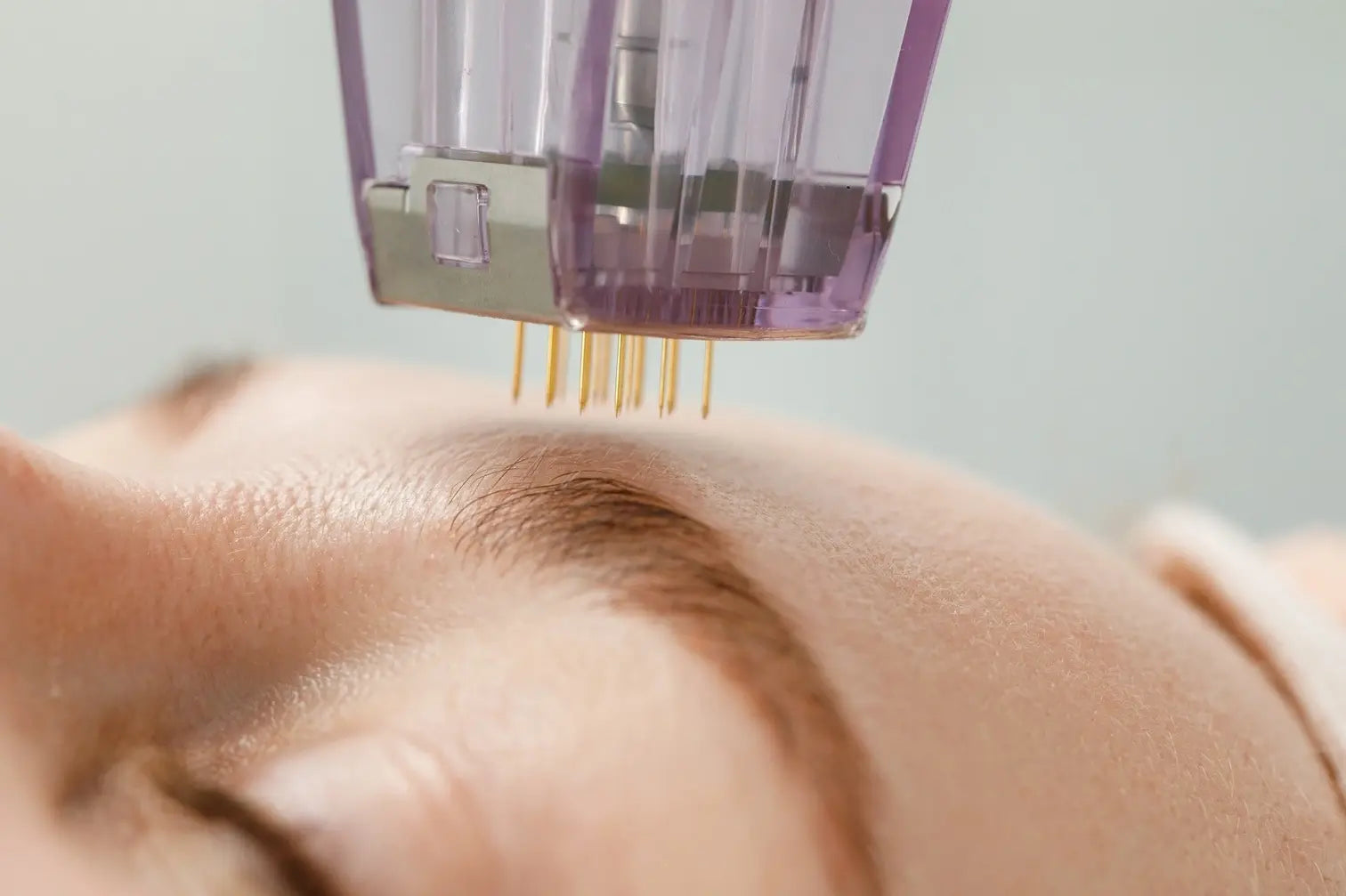What is Microneedling?
What Does Microneedling Do?
Microneedling Process
A licensed professional should always perform your microneedling treatment to ensure that the needles are sterile and sharp. Most microneedling procedures begin with a thorough skin cleansing and a numbing cream to minimize discomfort. Depending on the treatment area, the procedure can range from 20-30 minutes. Post-treatment, expect some redness and mild swelling akin to a sunburn, which generally subsides within a few days.2 Consult the physician performing your treatment about numbing creams, any serums used, and how this may influence your healing process. If you're wondering how long microneedling takes to heal, you can read all about the healing process and best practices for microneedling aftercare here!
Is Microneedling Safe?
While generally considered safe, microneedling carries inherent risks due to its invasive nature. A primary concern is the potential for infection, as the microchannels created can serve as entry points for pathogens.2 Proper microneedling aftercare of the affected treatment area using a gentle cleanser designed for even the most sensitive skin, is necessary to prevent infection.
While considered safe for sensitive and darker skin types, microneedling does come with certain risks. The micro-injuries created during the microneedling procedure can sometimes lead to excessive inflammation and increased melanin production around the site. Given these risks, consult with a dermatologist to determine if microneedling suits your specific skin type.2,3

Alternatives to Microneedling
Laser Therapy
Chemical peels
Diet
-
Fruits:
Rich in vitamin C, citrus and other fruits provide the essential building blocks for collagen synthesis while packing a powerful antioxidant punch.7
-
High protein foods:
Proteins like meats, poultry, fatty fish, eggs, and legumes contain essential amino acids necessary for collagen production.8
-
Nuts and Seeds:
Zinc and copper are important for collagen production and overall skin health. Not only are nuts and seeds rich in these minerals, they also contain lots of healthy fats and oils that help maintain the skin's lipid barrier.9,10
Topical Products
- Improve skin barrier function
- Boost skin hydration
- Even out skin texture
- Reduce skin wrinkling
- Enhance skin radiance
Products containing OS-01 can be used in conjunction with microneedling and other procedures, from laser treatments to dermal fillers, to magnify your skin’s health, strength, and appearance so you can embrace aging with confidence.Regardless of the treatment you decide on, always be sure to consult your skin health professional on recommended post-treatment care, from filler aftercare to Botox aftercare and more. Keep your OneSkin products on hand to help you through the journey and to help you reap the full benefits of your treatments.
- By creating micro-injuries in the skin, microneedling promotes the production of collagen and elastin, leading to smoother, firmer skin.
- While microneedling is generally safe, there are risks like infection and increased melanin production, particularly for sensitive or darker skin types.
- If you're seeking skin rejuvenation without the invasiveness of microneedling, options like laser therapy, microdermabrasion, and chemical peels may be effective alternatives.
- To avoid complications and see the best results, always adhere to the aftercare guidelines provided by your professional after any skin treatment.
- Incorporating OneSkin's products, like the OneSkin FACE and EYE topical supplements, work to boost your skin's natural collagen production and overall radiance.
-
Based on data from clinical studies and/or lab studies conducted on human skin samples, 3D skin models, and skin cells in the OneSkin lab. Explore more at oneskin.co/claims



